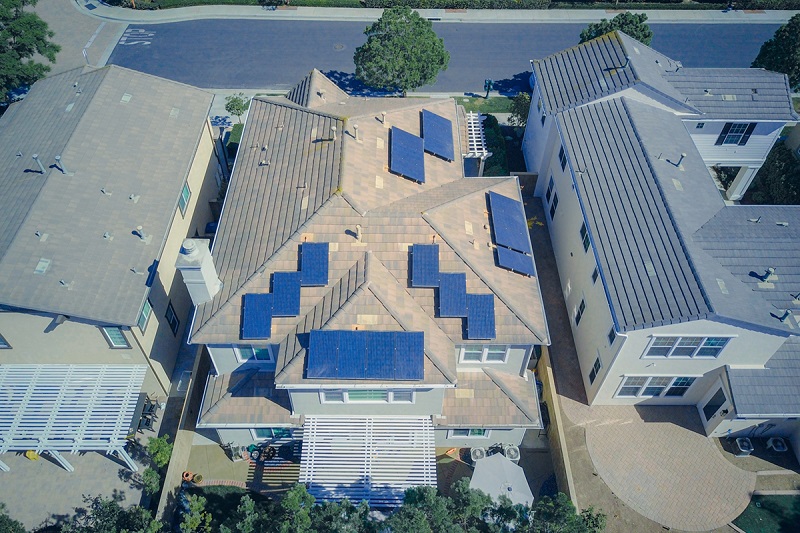EarthTalk®
From the Editors of E – The Environmental Magazine

A typical American home would need 19-31 solar panels to meet 100% of its electricity needs. Credit: Pexels.
Dear EarthTalk: How do I figure out how many solar panels I would need on my two-story, 2,500 square foot house in Seattle to meet my electricity consumption needs?– Paul O., Seattle, WA
While everyone’s situation is different, a typical 2,500 square foot American home would require a solar panel array that can output 6-10 kilowatts (kW) of power. Assuming that the panels have a wattage of 320 watts (W) each, a 6-kW system would require around 19 solar panels while a 10-kW system would need as many as 31 panels up top to supply 100 percent of the typical electricity needs for a home this size.
However, the exact number of panels you’ll need varies depending on factors including where you live, your roof’s orientation and shading, the type of solar panels you choose, and your average monthly electricity usage.
To get a more accurate estimate tailored to your exact situation, check out Google’s Project Sunroof, a free website that takes your address and analyzes your roof shape and local weather patterns to create a personalized solar plan.
You can adjust your electric bill to fine-tune your savings estimate and the recommended number of solar panels for your home, and then even compare loan, lease and purchase options for your solar panels based on your results. (In some cases, based on electrical costs in your region and the amount of sunlight your house will get, Project Sunroof’s algorithm might suggest not going solar.)
Once you have an estimate of the number of panels you need, you can start shopping for solar panels. There are a number of different types of solar panels on the market, so it’s important to do your research and compare prices before making a purchase.
You should also make sure that the solar panels you choose are compatible with your roof and that they have a warranty.
Also, traditional photovoltaic panels aren’t the only option anymore.
Thin-film solar cells are a newer technology that can be incorporated into roofing materials or other surfaces, blending into the roofline unobtrusively.
They are made of lightweight, flexible materials and can be easier to install than traditional photovoltaic panels. And if you need to replace an old roof or are building a new house, consider using solar roof shingles, which not only protect your home from the elements but generate electricity in the process without the need for bulky panels on top of them.
These newer technologies tend to be 15-20 percent more expensive than traditional photovoltaic panels but may be right for you depending on your situation.
And remember that the federal government offers a tax credit on 30 percent of the cost of your new solar system as long as it’s installed by the end of 2032.
You can also look for additional local and/or state incentives for going solar via the Database of State Incentives for Renewables & Efficiency DSIRE), a free online resource that lists all kinds of renewable energy incentives coast-to-coast.
Installing solar panels is a big decision, but it can be a great way to save money on your electricity bills and reduce your environmental impact. If you’re thinking about going solar, be sure to do your research and get multiple estimates before making a purchase.
CONTACTS:
Project Sunroof, sunroof.withgoogle.com/
DSIRE, dsireusa.org/
EarthTalk® is produced by Roddy Scheer & Doug Moss for the 501(c)3 nonprofit EarthTalk.
See more at https://emagazine.com
To donate, visit https://earthtalk.org
Send questions to: question@earthtalk.org
